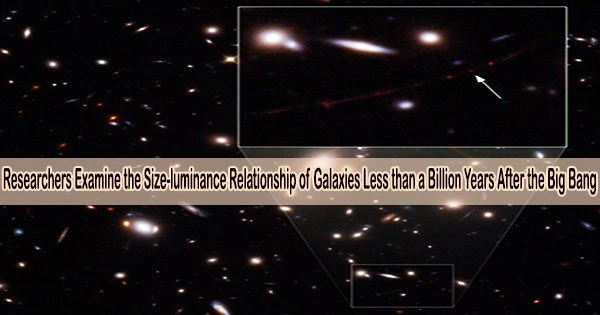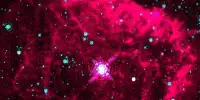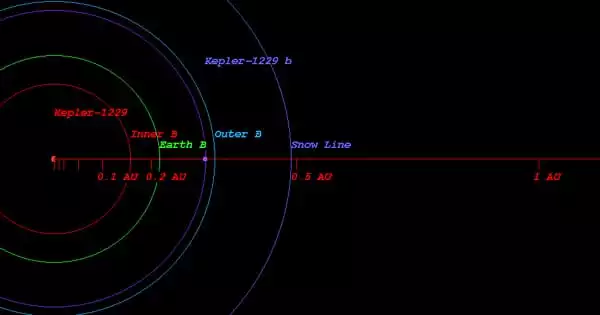According to a new study published in The Astrophysical Journal Letters, an international team of researchers led by the Kavli Institute for the Physics and Mathematics of the Universe (Kavli IPMU) studied the relationship between galaxy size and luminosity of some of the universe’s earliest galaxies captured by the brand-new James Webb Space Telescope (JWST) less than a billion years after the Big Bang.
The findings are part of the Grim Lens-Amplified Survey from Space (GLASS) Early-Release Science Program, which is coordinated by Professor Tommaso Treu of the University of California, Los Angeles.
Its goal is to explore the early universe when the first stars/galaxies ignited, ionizing the neutral gas in the universe and allowing light to show through. This is called the epoch of reionization.
However, the intricacies of reionization are unknown since telescopes have not been able to see galaxies in this epoch of the universe’s history in detail until now. Knowing more about the time of reionization will help astronomers comprehend how stars and galaxies developed to form the universe we see today.
One study, led by Kavli IPMU JSPS Fellow Lilan Yang, and including Project Researcher Xuheng Ding, used multiband NIRCAM imaging data from the GLASS-JWST program to measure galaxy size and luminosity to figure out the morphology and the size-luminosity relation from rest-frame optical to UV.
The original wavelength of light will shift to longer wavelength when it travels from the early universe to us. Thus, the rest-frame wavelength is used to clarify their intrinsic wavelength, rather than observed wavelength.
Lilan Yang
“It’s the first time that we can study the galaxy’s properties in rest-frame optical at redshift larger than 7 with JWST, and the size-luminosity is important for determining the shape of luminosity function which indicates the primary sources responsible for the cosmic reionization, i.e., numerous faint galaxies or relatively less bright galaxies.”
“The original wavelength of light will shift to longer wavelength when it travels from the early universe to us. Thus, the rest-frame wavelength is used to clarify their intrinsic wavelength, rather than observed wavelength.”
“Previously, with Hubble Space Telescope, we know the properties of galaxies only in rest-frame UV band. Now, with JWST, we can measure longer wavelength than UV,” said first author Yang.
The researchers discovered the first rest-frame optical size-luminosity connection of galaxies at redshifts greater than 7, or approximately 800 million years after the Big Bang, allowing them to examine size as a function of wavelength. They discovered that the median size at reference luminosity is approximately 450-600 parsecs, and that it decreases somewhat from rest-frame optical to UV. But was this expected?
“The answer is we don’t know what’s to expect. Previous simulation studies give a range of predictions,” said Yang.
When the slope of the size-luminosity connection was allowed to change, the team discovered that it was slightly steeper in the shortest wavelength band.
“That would suggest higher surface brightness density at shorter wavelength, hence less observational incompleteness correction when estimating luminosity function, but the result is not conclusive. We don’t want to over-interpret here,” said Yang.
















